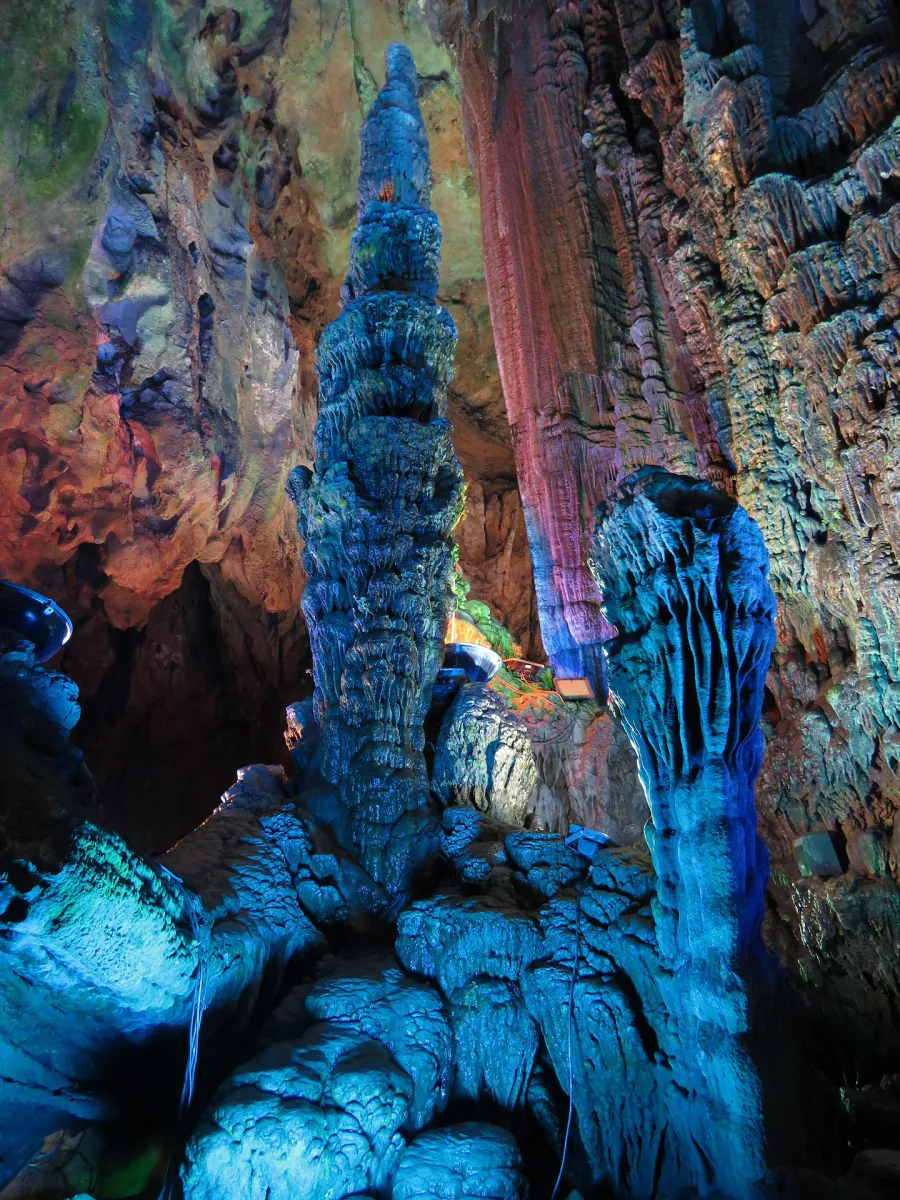Plenty of places to see
Li River
- Karst peaks reflected in emerald waters
- Inspiration for Chinese landscape painting
- Cruising from Guilin to Yangshuo is a UNESCO-listed experience
- Moon Hill and Nine-Horses Fresco along the route
The Li River, winding through Guangxi's karst mountains, is a masterpiece of nature. Its crystal-clear waters mirror surreal limestone peaks that have inspired poets for centuries. The 83-kilometer cruise from Guilin to Yangshuo reveals living scroll paintings, where fishermen's cormorants dive under bamboo-shadowed banks.
In addition, the Li River area is rich in local cultural elements. Along the river, you can often see traditional Chinese fishing boats, adding a touch of rustic charm to the beautiful scenery. The local fishermen, with their long - standing fishing skills, use cormorants to catch fish, which is not only a unique way of life but also an important part of the local intangible cultural heritage. Tourists can not only enjoy the natural beauty but also immerse themselves in this unique cultural atmosphere, experiencing the harmonious coexistence of man and nature in this land.

Are you interested in this place?
Longji Rice Terraces
- 800-year-old agricultural masterpiece
- Elevation spans 300-1100 meters
- Zhuang and Yao ethnic cultural preserve
- "Dragon's backbone" spiral patterns
Carved into mountainsides since the Yuan Dynasty, these cascading terraces create liquid gold landscapes during harvest. The Ping'an and Jinkeng sections showcase how ethnic minorities harmonized with nature. Hiking stone-paved trails reveals cloud-wrapped villages where wooden water mills still irrigate these living heritage fields.
Moreover, the Longji Rice Terraces are not only an agricultural wonder but also a stage for ethnic cultural displays. During festivals and special occasions, the Zhuang and Yao ethnic groups will hold various traditional activities. Colorful folk dances, unique songs, and traditional handicraft exhibitions can be seen here. The villagers' traditional costumes, full of ethnic characteristics, add a vibrant touch to the terraced fields. These cultural activities not only enrich the tourist experience but also play an important role in inheriting and promoting the unique cultures of the Zhuang and Yao ethnic groups.

Are you interested in this place?
Reed Flute Cave
- 240-meter illuminated limestone wonderland
- Natural sculptures formed over 600,000 years
- "Crystal Palace" with 12-meter-high stone pillars
- Tang Dynasty inscriptions preserved in humidity
This 180-million-year-old karst cavern dazzles with kaleidoscopic formations. Colored lights transform stalactites into coral forests and jade curtains. The 70-minute journey through its 500-meter passage unveils nature's sculpting mastery, where water droplets continue crafting stone blossoms at 1cm per century.
Furthermore, the Reed Flute Cave has a profound historical and cultural background. The Tang Dynasty inscriptions found in the cave are precious historical relics, providing valuable insights into the social, cultural, and religious aspects of that time. They are like silent witnesses, telling the stories of the past. Also, the cave has been a place of interest for people throughout history. Ancient scholars and travelers were also deeply attracted by its beauty and mystery, and their descriptions and records in poems and essays have further enhanced the cultural connotations of the Reed Flute Cave.

